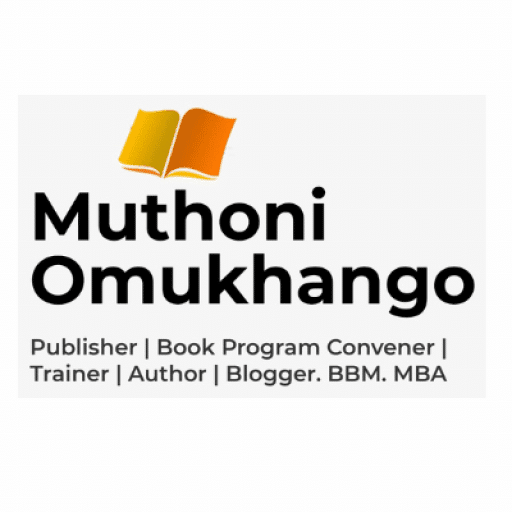STAGES IN WRITING PROCESS:
- 1. Pre-writing
- 2. Drafting (actual writing)
- 3. Revising (editing)
We have discussed pre-writing phase where you research about your topics and then accumulate the entire information at the drafting or actual writing phase.
We also discussed what happens at the drafting phase or the actual writing phase. We looked at how you put your points and ideas on paper and arrange these points in a readable manner. First, you do a rough draft and then arrange the points in the best possible way. At the end of this phase, you prepare a final draft – this draft is your first manuscript.
Congratulations! This is not an easy achievement. The hard part of writing a book isn’t getting published. It’s the actual writing. Books don’t just write themselves, after all. You have to invest everything you are into creating an important piece of work.
Take a break at this point. You deserve it.
REVISING, EDITING AND PROOFREADING PHASE
Before you part with your manuscript, you need to edit, revise and proofread it. It is worth noticing the distinction between these three terms; while revising and editing may involve changes of structure, format and contents, and implementing the changes you have made, and proofreading is concerned with correcting mistakes related to, for instance, spelling and punctuation.
At this phase, you need to check your work carefully – to hand in a manuscript full of typos or with spelling mistakes gives an unfavourable impression to your mentor, editor, reviewer, and publisher or even peer reviewer. No manuscript should be sent out or published without going over it at least once! Twice is even better.
At this stage, new points are added and some points are replaced and removed as per the requirements to make the outlook of the writing catchy and cogent. It’s aimed at polishing your work to fit your statement, check for the flow of your writing, the formation of your sentences, the grammar, spellings, the topic sentences; basically everything.
Caution: The writing process may look long and tiring but is guaranteed for your success. The more you follow the process, the more you will be able to write a quality book. This phase keeps you interested in writing and also helps you in covering each and every aspect related to your topic.
REVISING
Though revising is one of the longer stages of writing, you may find yourself learning quite a bit. Noticing errors and the patterns of errors you make, and learning how to fix them will help you become a better writer.
Find the tone of the writing and check each line thoroughly. Check spelling, grammar, punctuation, sentence structure, manuscript format and other things. Check the entire manuscript for mistakes.
MODIFY THEME AND LINES
You can modify sentences, paragraphs and even the flow of your book. At this point, it is ok to go back to your outline and rework it to fit in with the content already in place. Chapters can be moved around, making sure you actually wrote what you intended in the pre-writing phase. You may be surprised to hear that revising should take as much time as drafting!
REVISING CHECKLIST
On text-paragraph, ask yourself:
• Did I actually write on the required topic and used relevant arguments and examples, or digressed inadvertently?
• Is each piece of information relevant to the paragraph it is in? Should I delete certain parts or move them somewhere else in the text? In other words, is your text cohesive and unified around one theme?
• Does each paragraph and sentence logically follow and relate to what’s written before it? Is there enough or too much support to each topic sentence? Then make changes accordingly.
On sentence-word, ask yourself:
• Did I use suitable connectors to present the logical relations between text segments (cause-effect, general-detail, compare-contrast, chronological order etc.) in order to make the text coherent?
• Did I technically tie ideas together with relevant word choices, apt pronoun reference, and techniques such as parallelism and emphasis?
• Did I diversify sentence types and lengths (from simple to complex, short and concise to long and elaborate)? Consider uniting two consecutive short sentences or dividing a long compound-complex sentence into two shorter ones.
• Did I refrain from no-no’s such as wordiness or inappropriate register?
• Did I refrain from repeating the same ideas and words and used a rich and varied vocabulary? Did I use adjectives and adverbs for text enrichment? Did I mainly use my own words?
• Do not attempt showing-off with a fancy word you do not know how to use properly.
EDITING
Editing is sometimes considered part of revising, but refers to judging your text for language and technicalities rather than content. This is the time for all you grammar-lovers and nitty-gritty enthusiasts to meticulously scan the text for language accuracy.
A critical commentary on your work will ensure that not only the grammar and spelling are perfect but that the style, tone, and structure of your manuscript are also on point. While the manuscript reviewer looked at your work as a whole and offered advice on making it better, the editing stage will involve a line-by-line review of your document for grammar, structure, flow, consistency, and much more.
• Your sentences should adhere to proper word order rules, each containing a subject and a predicate. Use a variety of verb tenses correctly and appropriately (simple, progressive, perfect, and perfect-progressive tenses).
• Be careful with subject-verb agreement issues.
• Use a variety of language constructions to make your writing more precise and educated (comparative structures, relative clauses, conditional sentences, not too much of the passive voice etc.)
• Use a dictionary or spell checker when not sure about spelling. Reread your text again for problematic homonyms (there-their-they’re).
• Use a variety of punctuation marks accurately and consult a style guide when hesitating between a comma, colon, or semi-colon.
• Edit for text mechanics: capitalization, numbering, italics, and abbreviations.
PROOFREADING
You may think that since your book has been revised, it’s ready to be submitted. However, consider all the changes you may have made not only to improve the technical issues but also to address the comments and work on the content of your manuscript.
It’s easy to introduce errors into your writing during the revision process, such as typos or missing punctuation. Moreover, it’s easy to miss these as the writer of the manuscript, since you’ve read and reread the content many times.
That’s why a final book proofread is important. You can catch the errors that stand out and make you look unprofessional, making sure your book is truly ready for publication.
Proofreading comprises that one extra step you need after revising and editing in order to locate any small mistakes you missed out on until now. Be it some urgent last minute content change or some spelling and punctuation that escaped your attention – this is the time to brush away those invisible blemishes before submitting the final copy.
If manuscripts are commented on electronically, there are functions in the software that can be helpful. In MS Word, for instance, the “Track changes” function is useful, as is the Comments function.
HOW TO REVISE, EDIT AND PROOFREAD YOUR WORK
Although it may be difficult to spot mistakes in one’s own manuscript, the following advice is helpful:
Read the manuscript aloud
By reading your manuscript aloud, you will be in a better position to identify problems such as inaccurate sentence structure and inaccurate use of punctuation. It is also easier to get a grip on the flow of the manuscript when it is read aloud. Missing transitional devices will become apparent, for instance, as will repetitive use of certain words and phrases.
Tip: Use MS Word ‘Read Aloud’ which is promoted to the Review tab. If it’s not there, add it to the Quick Access Toolbar. Click on Read Aloud and Windows/Word will start speaking the manuscript from the cursor onwards. New in Read Aloud is a little control panel on the top right of the document window
If you cannot find the Read Aloud, here is how to access: Add the Speak button to the Quick Access Toolbar: Click the Customize arrow on the Quick Access Toolbar. From the dropdown menu, select More Commands. On the Word Options screen >Customize the Quick Access Toolbar, locate the Choose Commands From box and scroll down to the Speak command. Select the Speak command, click the Add button in the middle of the screen, then click OK. MS Word adds the Speak command to the Quick Access Toolbar at the end, and you’re ready to go.
Another option is to ask someone else to read your manuscript out to you; that will also help you become aware of aspects of your manuscript that you may not have seen while reading it yourself.
If there is time, wait a few days. If you can leave your manuscript for a few days before revising and proofreading it, you might find it easier to spot mistakes and incongruences.
Look at the manuscript from different perspectives
Do not read your manuscript only from beginning to end, but make sure to check that the structure is coherent, that your argument is logical and that your conclusions are based on your analysis.
Use your experience
Look at previous feedback you have received from your mentor and/or reviewer. What kinds of problems have been identified by your peer reviewers? Check your new manuscript for these problem areas.
Tip: Peer reviewing and other collaborative types of editing. Many writers submit their manuscript to peers for feedback of different kinds. In the CLC Kenya’s writing class, fellow class mates become your peer reviewers. Although writers might feel intimidated by the idea of submitting their manuscripts to other people, manuscripts usually improve as a result of being questioned and commented on.
The task of a peer reviewer is to help you sharpen your argument and improve your manuscript. Also by reviewing other writers’ manuscripts, peer reviewers also train their own analytical abilities. Encountering different ways of structuring content, of presenting facts and arguments, etc., gives the peer reviewer an increased understanding of the writing skill.
REVISING THE MANUSCRIPT
Focus and structure
In order to gain precision and focus, manuscripts often need to be somewhat restructured. Check that there are topic sentences in all paragraphs, that each section has an overall structure and, of course, that the manuscript in fact does what it sets out to do.
Structuring the manuscript
Manuscript structure has to do with perspective – you need to structure your thoughts and your writing in order for the manuscript to make sense to the reader. This means that a well-structured manuscript communicates the writer’s intentions and results to the reader. In such a manuscript, the structure acts like a framework, in that it enables the material to be presented in a coherent and logical manner. A manuscript without structure, on the other hand, is difficult to read as it leaves the reader unprepared for what will come next, and the ideas that the writer wishes to convey to their readers therefore risk being lost or misunderstood.
Sentence structure and punctuation
Two common problems related to sentence structure are fragments (that is, sentences that are not complete) and run-on sentences (which are sentences that follow after each other without being separated by a full stop or a coordinating conjunction). Writers who make these mistakes often find punctuation rules difficult too.
Fluency and readability
Manuscripts that lack transitional devices are difficult to read. Go through your manuscript and make sure there are transitions when needed between paragraphs and between sections.
REVISING THE LANGUAGE
Vocabulary
Although it might be difficult to make substantial vocabulary changes at the revising stage, repetitive use of certain words and expressions can be corrected. At this stage, most writers consult reference books of various sorts. A good dictionary is a must (both printed and electronic), but other tools are also useful.
Spelling
To avoid typos and spelling mistakes, it is wise to use the spell-check function in MS Word (or other software used). Make sure to check that it is set for English and choose the preferred spelling (British or American).
Grammar
It is important to make sure that the language used in your manuscript is grammatically correct. Although most standard Word Processors include a grammar checker, you cannot trust it to catch all potential mistakes.
FORMATTING
At this point you can choose and adjust word count, line spacing, font size, etc. Note that these are usually not seen as requirements because more settings will be done during the design phase during the publishing process. If your manuscript is too long, you can probably cut it down and if it’s too short, you can add more content.
FRAMING THE TITLE
At this point, you should relook at your title to see whether it needs revision based on the new flow of the finished manuscript. This element frames the manuscript in the sense that the title is what first welcomes the reader to the manuscript.
The title needs to be informative and attractive in order to gain prospective readers’ attention. Consider the following when formulating a title:
- Avoid long and convoluted titles. If choosing a so-called compound title (a title consisting of two elements separated by a colon, for instance), make sure that both parts of the title are relevant and necessary.
- Include keywords of the manuscript in the title in order to inform prospective readers as well as to make sure that the manuscript is easily found by readers interested in the subject.
- Avoid false marketing by making sure that your title does not indicate something that is not actually discussed in the article.
FRAMING THE REFERENCE LIST
Finally, check that your references are up to date and well captured at the last page of the manuscript. This should be the final part of the manuscript.
Make sure that the use of references (both in-manuscript references and the reference list) is correct as well as consistent.





